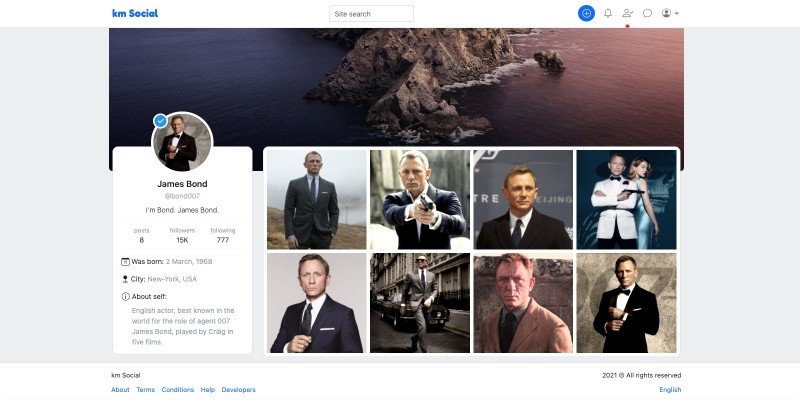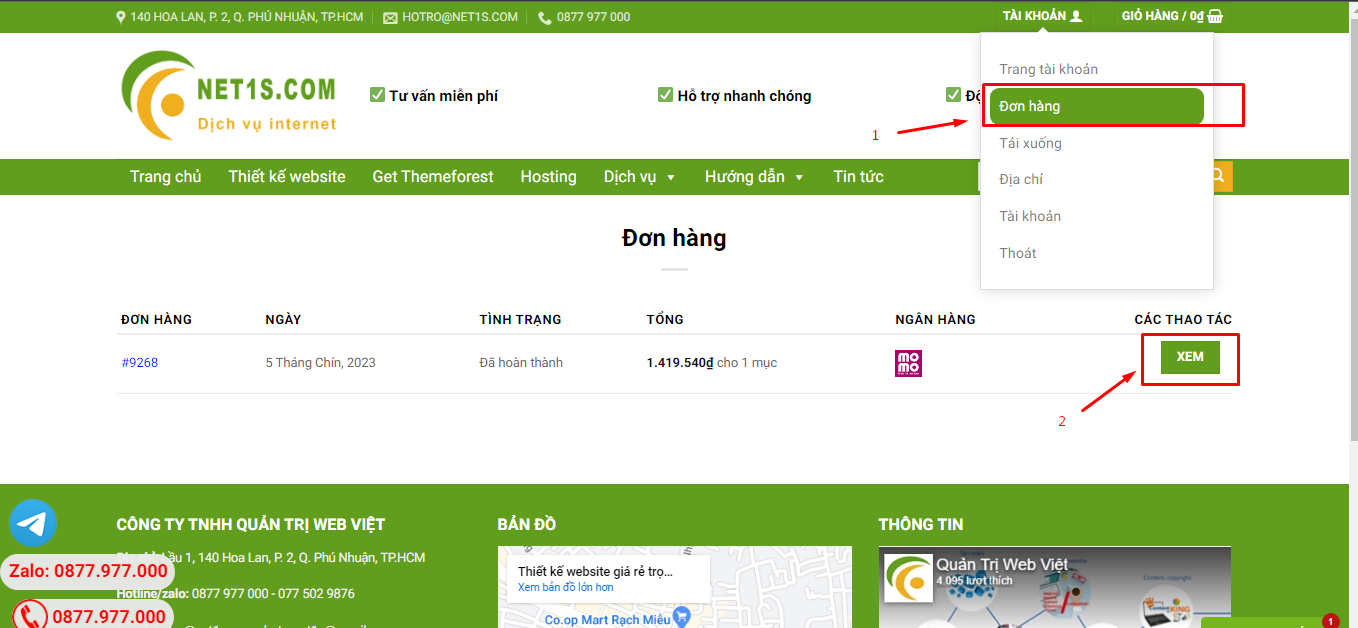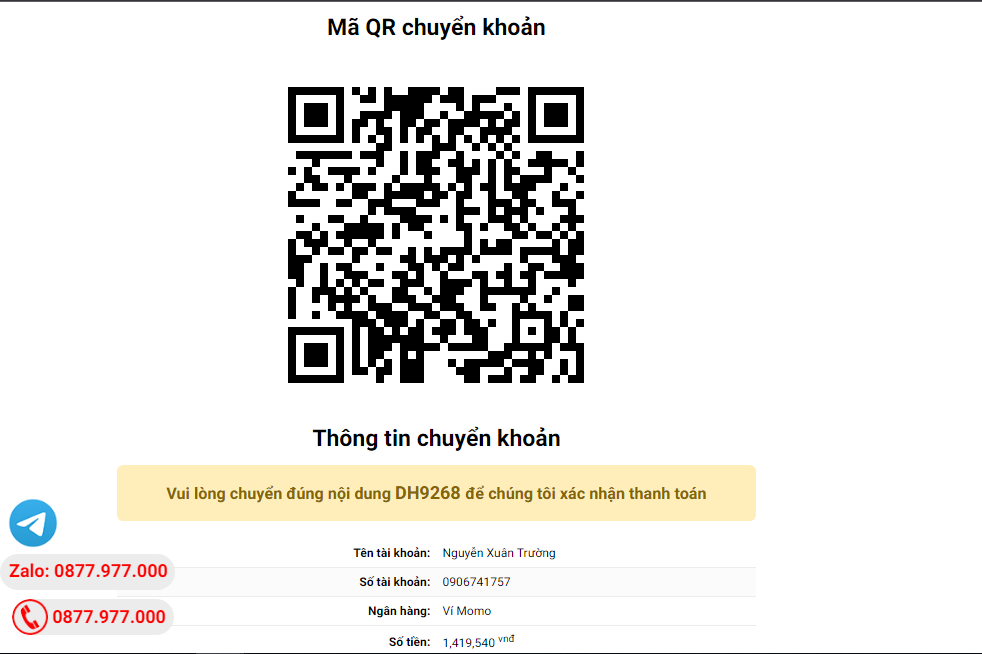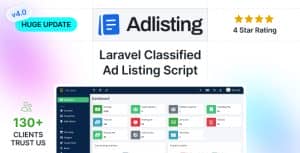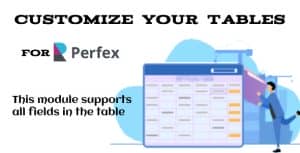- Dịch vụ khác (7)
- Wordpress (32741)
- Plugin (8229)
- Apps Mobile (364)
- Codecanyon (4157)
- PHP Scripts (763)
- Plugin khác (2537)
- Whmcs (68)
- Wordpress.org (340)
- Theme (24512)
- Blogger (2)
- CMS Templates (545)
- Drupal (3)
- Ghost Themes (3)
- Joomla (19)
- Magento (2)
- Muse Templates (37)
- OpenCart (19)
- PrestaShop (9)
- Shopify (1139)
- Template Kits (6098)
- Theme khác (379)
- Themeforest (7414)
- Tumblr (1)
- Unbounce (3)
- Website & Html Templates (8839)
- Admin Templates (800)
- Email Templates (228)
- Site Templates (7328)
- Plugin (8229)
km Social – Photo Sharing Script PHP
1.290.650₫ Giá gốc là: 1.290.650₫.258.130₫Giá hiện tại là: 258.130₫.
km Social is the best way to create your own photo sharing site! Script is fast, secure. Your waiting for regular updates. Thanks to the convenient and simple structure of the script, it will be easy for you to understand it. Script is adapted for any devices.
Multilingualism – script is translated into 2 languages (English, Russian). In the next update it is planned to translate more languages.
Account:
- Full name
- Username
- Gender
- Birth date
- City
- Country
- Online status
- About info
- Site link
- Avatar IMG
- Site
- Verification
- Cover IMG
- Privacy (Closed, Open)
- Deactivate
- Ban
- Delete
- and so much more..
Follow System:
- Follow
- Unfollow
- Requests
- Accept
- Reject
Photos:
- Share
- Like
- Comment
- Add filter effect (25 effects)
- Save to bookmarks
- Description
Notifications:
- Like
- Comment
- Follow
- Accept follow request
Archive(photos):
- Add
- Delete
Saves (photos, users, posts):
- Add
- Delete
- PHP 7 and above
- MySQL 5 and above
- Apache 2 and above
- Domain Name
- Web Hosting
1) Upload Process
The first step is to upload the content inside the folder “Script” (IMPORTANT NOTE: Upload what’s inside the folder Script, not the script folder) into your public_html folder or into your default FTP root folder.
The second thing is to upload your “mysql.sql” file from the folder called “MySQL” using the IMPORT function available in phpMyAdmin.
2) Installation Process
Now, After you uploaded everything, You can start the installation process.
Changes inside the files
1) With a text editor (e.g.: Notepad), Open the following folder located inside the ‘/app/configs/database.php‘. Now, Replace what’s inside the brackets with your MySQL settings,
define ("DataBase_HOST", "WHERE YOUT DB HOST"); // database Host
define ("DataBase_NAME", "WHERE YOUT DB NAME"); // database Name
define ("DataBase_USER", "WHERE YOUT DB USER"); // database User
define ("DataBase_PASSWORD", "WHERE YOUT DB PASSWORD"); // database Password
2) With a text editor (e.g.: Notepad), Open the following folder located inside the ‘/app/configs/site.php‘. Now, Replace what’s inside the brackets with your MySQL settings,
'title' => "WHERE YOUR SITE TITLE", // site Title 'description' => "WHERE YOUR SITE DESCRIPTION", // site Description 'keywords' => "WHERE YOUR SITE KEYWORDS", // site Keywords 'site_url' => "WHERE YOUR SITE URL", // site Full URL - ALWAYS add a slash at the end 'site_url_path' => "WHERE YOUR SITE URL PATH", // site Path URL without https and slashes
Save and exit.
Tặng 1 theme/plugin đối với đơn hàng trên 140k:
Flatsome, Elementor Pro, Yoast seo premium, Rank Math Pro, wp rocket, jnews, Newspaper, avada, WoodMart, xstore
1. Bấm Đăng nhập/đăng ký.
2. Điền thông tin email, mật khẩu đã mua hàng -> bấm Đăng nhập.
3. Di chuột đến mục Tài khoản -> Đơn hàng -> bấm vào Xem ở đơn hàng đã mua.
4. Đơn hàng hiển thị tình trạng Đã hoàn thành -> bấm vào Download để tải sản phẩm về.
1. Bấm Thêm vào giỏ hàng -> bảng thông tin giỏ hàng sẽ hiển thị góc trên bên phải.
2. Bấm Thanh toán.
3. Điền thông tin thanh toán gồm: tên, email, mật khẩu.
4. Chọn phương thức thanh toán có hỗ trợ gồm: Chuyển khoản ngân hàng (quét mã QR), quét mã Momo, quét mã Viettelpay, Paypal.
5. Bấm Đặt hàng để tiếp tục.
5. Thanh toán bằng cách quét mã QR (Nội dung chuyển khoản và số tiền sẽ tự động được tạo), hoặc chuyển khoản nhập số tiền và nội dung chuyển khoản như hướng dẫn.
6. Sau khi thanh toán xong đơn hàng sẽ được chúng tôi xác nhận đã hoàn thành và bạn có thể vào mục Đơn hàng để tải sản phẩm đã mua về.

